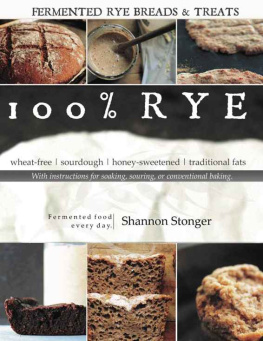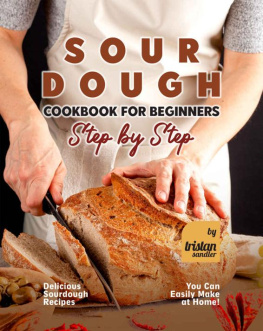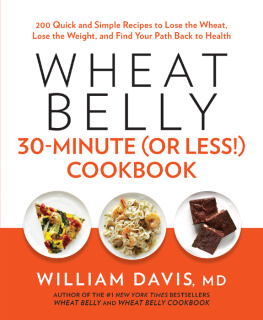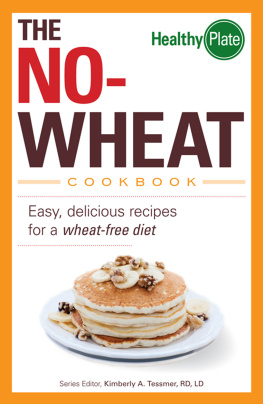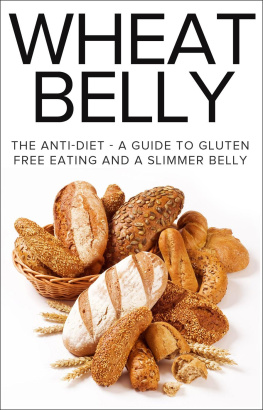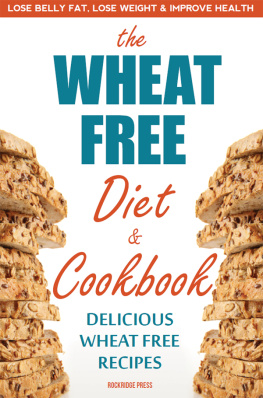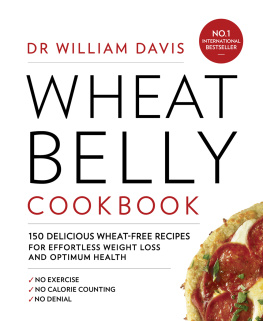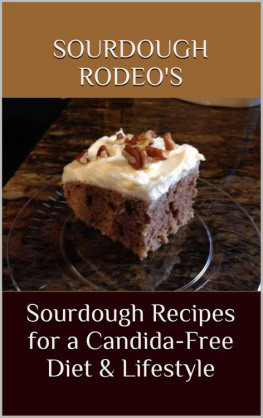Stonger - 100 Rye
Here you can read online Stonger - 100 Rye full text of the book (entire story) in english for free. Download pdf and epub, get meaning, cover and reviews about this ebook. year: 2015, genre: Home and family. Description of the work, (preface) as well as reviews are available. Best literature library LitArk.com created for fans of good reading and offers a wide selection of genres:
Romance novel
Science fiction
Adventure
Detective
Science
History
Home and family
Prose
Art
Politics
Computer
Non-fiction
Religion
Business
Children
Humor
Choose a favorite category and find really read worthwhile books. Enjoy immersion in the world of imagination, feel the emotions of the characters or learn something new for yourself, make an fascinating discovery.
- Book:100 Rye
- Author:
- Genre:
- Year:2015
- Rating:3 / 5
- Favourites:Add to favourites
- Your mark:
- 60
- 1
- 2
- 3
- 4
- 5
100 Rye: summary, description and annotation
We offer to read an annotation, description, summary or preface (depends on what the author of the book "100 Rye" wrote himself). If you haven't found the necessary information about the book — write in the comments, we will try to find it.
100 Rye — read online for free the complete book (whole text) full work
Below is the text of the book, divided by pages. System saving the place of the last page read, allows you to conveniently read the book "100 Rye" online for free, without having to search again every time where you left off. Put a bookmark, and you can go to the page where you finished reading at any time.
Font size:
Interval:
Bookmark:
Table of Contents
Loaves & Doughs
Savory
Breakfast & Sweet Treats
Copyright 2015 Shannon Stonger
It was not long after we moved off-grid that I purchased my first 50 pound bag of rye flour. When we made that trek across the country some of the few items that we did hold onto were the buckets full of beans, oats, and spelt. With plenty of physical labor to be done, a growing family, and a baby on the way; it wasnt long before the spelt our favorite bread grain was nearly used up.
 So I searched around online for a source of spelt flour and was shocked at the prices. Apparently those 50 pound bags I had been buying from our food coop were a good deal. So I dug around a bit and found organic rye flour to be half the price. I hadnt done much in the way of rye baking but I figured for that kind of savings, why not give it a go?
So I searched around online for a source of spelt flour and was shocked at the prices. Apparently those 50 pound bags I had been buying from our food coop were a good deal. So I dug around a bit and found organic rye flour to be half the price. I hadnt done much in the way of rye baking but I figured for that kind of savings, why not give it a go?
With 50 pounds of rye flour on the way I began doing some research; what exactly could I make with rye flour besides fluffy loaves filled with white flour and caraway seeds? Turns out, there werent a whole lot of recipes on the internet for 100% rye baked goods. There were a few loaves delicious in their own right but I was looking for some variety.
Without much in the way of outside information I took to the kitchen and churned out some pretty sad, gummy, and unappetizing baked goods, at first. After some practice and some research on the properties of the rye grain we started with a no-knead sourdough loaf. Then there were fluffy pancakes. A pie crust soon followed and then some biscuits, noodles, tortillas, treats, and more loaves. All of these were made with my beloved sourdough starter. As I later found out, the acidic properties of a sourdough starter are helpful in taming the gumminess inherent in the rye proteins.
A collection of 100% rye sourdough recipes was beginning to take shape and we thought maybe Id put together a cookbook of core recipes for the home cook. In the time since there has been illness, a sweet new baby, a broken laptop, and then a broken camera. That was a year-and-a-half ago; it seems I was not to finish this book then.
While my husband Stewart recovered and sweet baby Ruthie grew, I kept preparing these breads for our family. I found new tricks and recipes that worked for our hectic, unpredictable off-grid life. I developed a few honey-sweetened rye sourdough treats for our family and community celebrations. There is now a new camera and computer, a baby who just marked her first year, and a husband who is up and around and back-at-it in a way I thought Id never see.

We thought about other ways to bring you these recipes through a publishing deal or maybe in a larger collective further down the road. But it just didnt seem to fit these recipes, our life, or how wed like them to be brought to you.
And so we give you this book of core recipes that can get you baking everyday loaves, honey-sweetened treats, and wheat-free snacks. They are all soured or soaked and have all been tested with a longer 12-24 hour fermentation period. There are, however, also options for skipping those steps, in case youre simply interested in baking with 100% rye flour and conventional leavening and preparation methods.
This is a collection of well-loved recipes from our home kitchen, part of a larger collective of recipes to encourage the eating of fermented foods every day, and a stand-alone resource for you to use to nourish your own family.
It is my sincerest hope that this book aids you in feeding yourself, and others, well.
 Happy Baking,
Happy Baking,
Shannon Stonger
We began eating rye flour, as well as older varieties of wheat, when my husband and son showed a sensitivity to commercial wheat. Ive done plenty of gluten-free and grain-free baking, but rye appealed to me for a number of reasons:

- It is not gluten-free but it is often tolerated by those who do not tolerate wheat. My theory on this is that the proteins (gluten) in wheat are not exactly the same as those in rye. In addition, rye, because it is not as popular of a grain as wheat, has not been tampered with to the extent that wheat has by modern breeding techniques and industrialized agriculture.
- It is more economical. When we started having concerns over modern wheat varieties and the toxins with which they are grown, I began baking with spelt, kamut, einkorn, and other heirloom varieties of wheat. When I went to replenish our supply, I found the price of these to be very prohibitive. Organic rye flour, on the other hand, cost not much more than a sack of King Arthur wheat flour from the grocery store. That first 25 pound bag of organic rye flour, and the pancakes, breads, and tortillas I made from them, had our family hooked.
- Rye has been shown to have a beneficial effect on blood sugar. A study on the topic at Lund University in Sweden found the following conclusions : This cross-over study showed that the endosperm rye bread and the whole grain rye bread (especially the sourdough one with lactic acid) best controlled blood sugar and regulated appetite. Blood sugar control is one of my own personal health struggles so this seemed a good option to explore for our family.
- In one study, rye was found free from glyphosate. After about a year of working with rye, I read an interesting article wherein the folks at Tropical Traditions wanted to be sure that their organic grains were free from glyphosate one of the most prevalent and most toxic of all herbicides. The tests found that of the varieties of organic grains tested for this dangerous herbicide, only rye and millet were free from contamination. This doesnt necessarily mean that all rye is free from contamination. It is, however, a reminder that the most popular of crops in our country corn, soy, and wheat are generally the most tampered with, simply because that is where the money is.
- It is a traditional grain. If none of the above were true, I would still choose rye based on this fact alone. Rye has a very long tradition of consumption - specifically in the form of sourdough - in some of the most long-lived traditional cultures in the world. Its also an interesting crop for the small homestead as both a cooler-weather grain crop and an excellent green cover crop. Furthermore, in our climate, it may be a good winter crop whereas grains like millet and buckwheat dominate spring, summer, and fall.
- Rye is more akin to baking with wheat than most gluten-free grains . It is most certainly different from wheat, but it is similar enough to wheat to be a great jumping-off point for newly wheat-free bakers.
We dont eat rye all of the time; I might be too restless of a baker to stick with one grain for long. But the rye grain has opened up my eyes to a host of delicious, wheat-free breads and treats, the recipes of which I share with you in this book.

If theres one thing I do not like to do it is to debate food on the internet or in real life, for that matter. You can talk politics, religion, weather, and scientific theories with people but bring up a hot-topic food debate and thats where party lines get drawn.
Font size:
Interval:
Bookmark:
Similar books «100 Rye»
Look at similar books to 100 Rye. We have selected literature similar in name and meaning in the hope of providing readers with more options to find new, interesting, not yet read works.
Discussion, reviews of the book 100 Rye and just readers' own opinions. Leave your comments, write what you think about the work, its meaning or the main characters. Specify what exactly you liked and what you didn't like, and why you think so.

